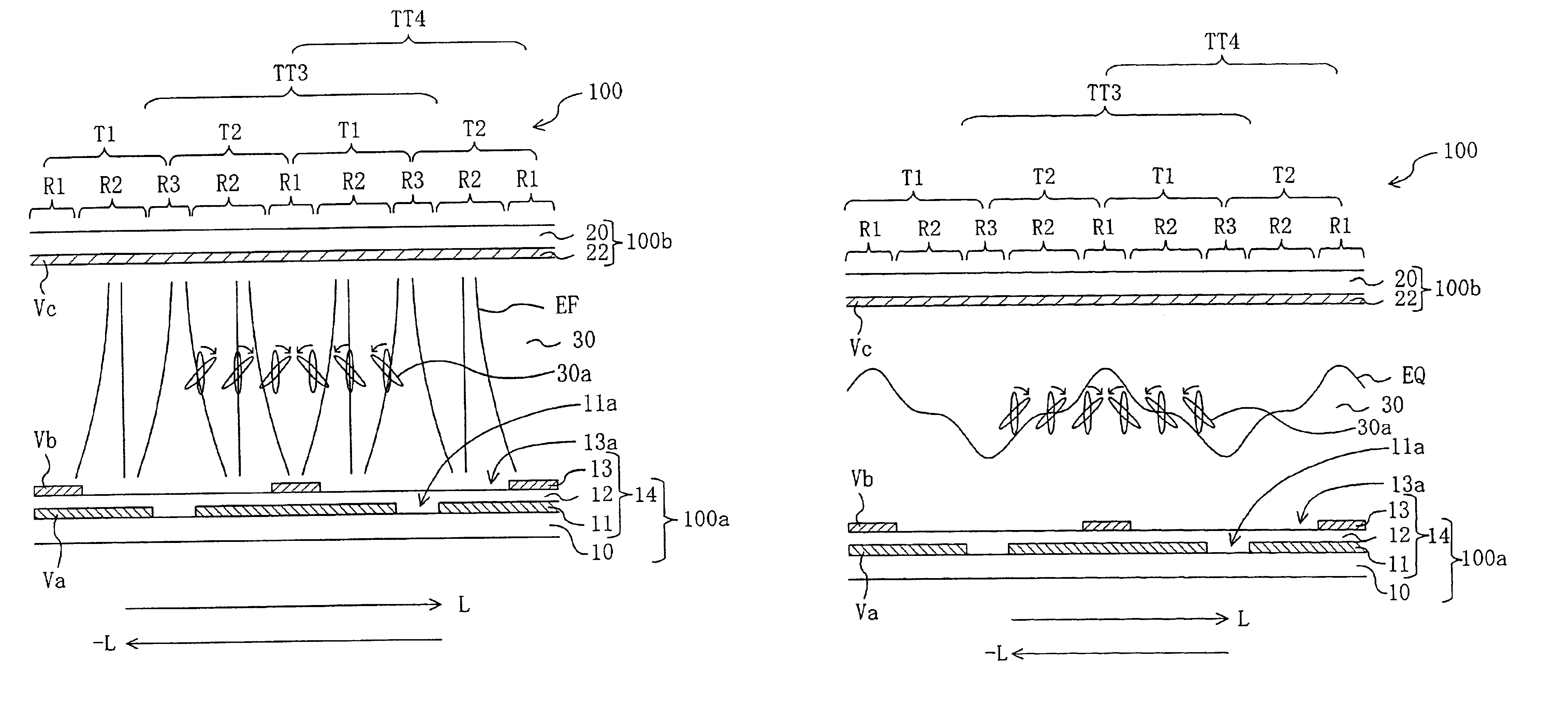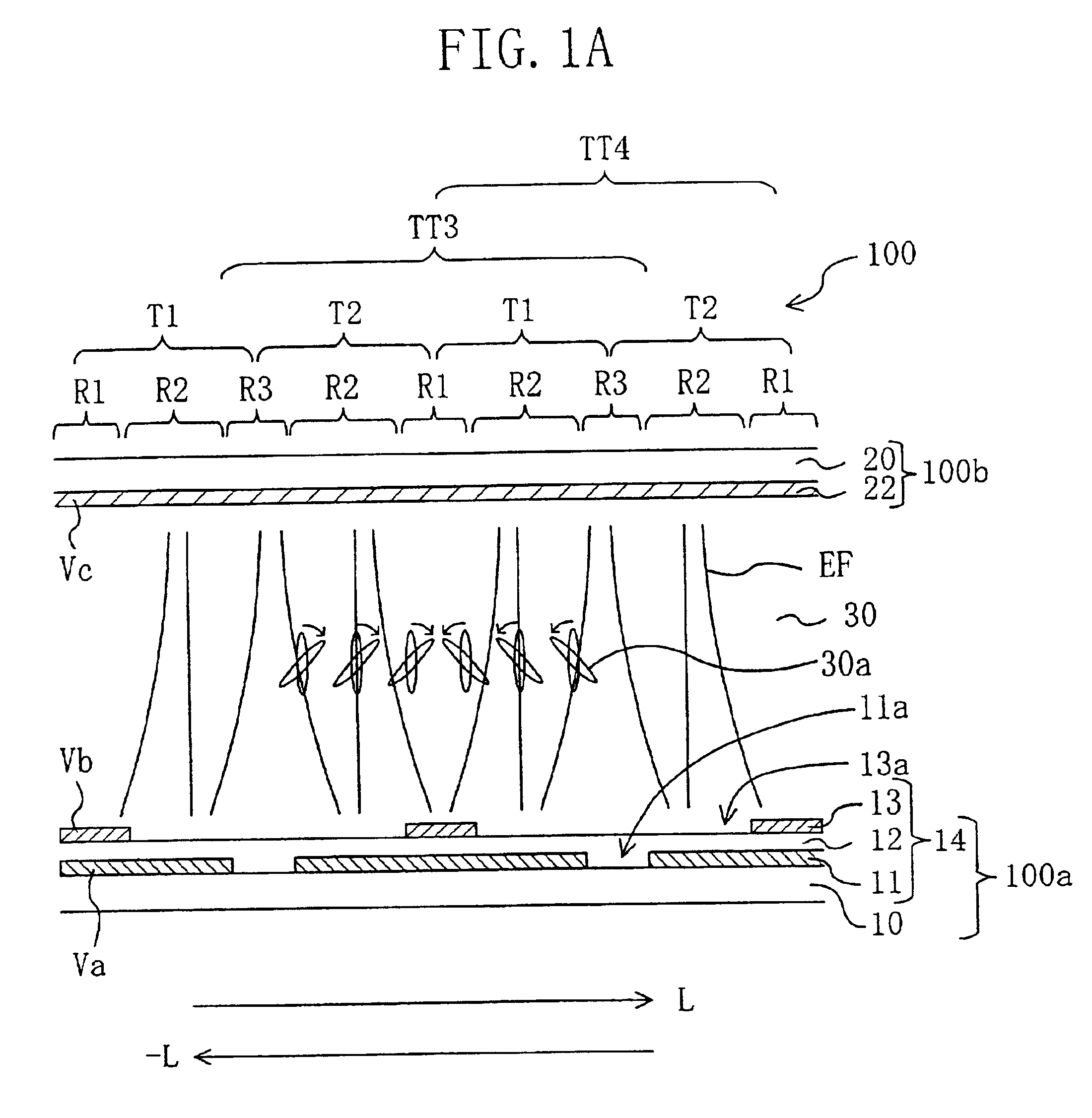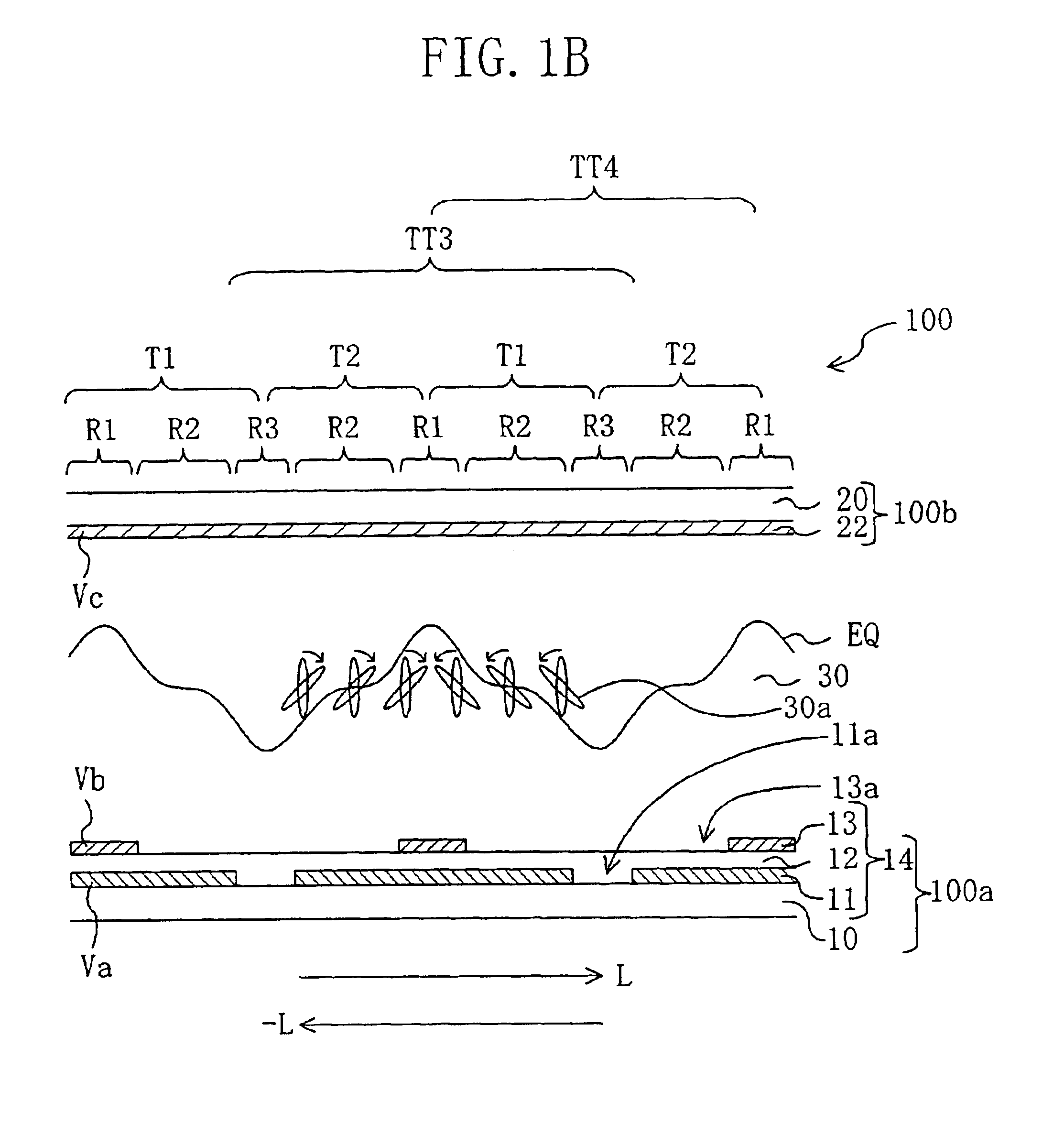Liquid crystal display device
- Summary
- Abstract
- Description
- Claims
- Application Information
AI Technical Summary
Benefits of technology
Problems solved by technology
Method used
Image
Examples
embodiment 1
quid crystal display device 300 of Embodiment 1 of the present invention.
[0063]FIG. 3B is a cross-sectional view schematically illustrating the liquid crystal display device 300 of Embodiment 1 of the present invention.
[0064]FIG. 4 is a diagram schematically illustrating a liquid crystal display device 400 of Embodiment 1 of the present invention.
[0065]FIG. 5 is a graph illustrating the applied voltage dependency of the transmittance of the liquid crystal display device 400.
[0066]FIG. 6 is an iso-contrast contour curve (contrast ratio=30) of the liquid crystal display device 400.
[0067]FIG. 7 is a diagram schematically illustrating a liquid crystal display device 500 of Embodiment 1 of the present invention.
embodiment 2
[0068]FIG. 8 is a plan view of a counter substrate 600b used in a liquid crystal display device of Embodiment 2 of the present invention.
embodiment 3
[0069]FIG. 9 is a perspective view schematically illustrating a liquid crystal display device 700 of Embodiment 3 of the present invention.
[0070]FIG. 10 is a cross-sectional view schematically illustrating the liquid crystal display device 700 of Embodiment 3 of the present invention.
[0071]FIG. 11 is a diagram schematically illustrating the planar structure of a data electrode 714 of the liquid crystal display device 700.
[0072]FIG. 12 is a diagram schematically illustrating the structure of a first electrode 814 used in a liquid crystal display device according to the present invention.
DETAILED DESCRIPTION OF THE INVENTION
[0073]Hereinafter, preferred embodiments of the present invention will be described with reference to the accompanying drawings. First, the electrode structure of the liquid crystal display device of the present invention and the function thereof will be described.
[0074]In the present specification, a region of a liquid crystal display device corresponding to a “pi...
PUM
 Login to View More
Login to View More Abstract
Description
Claims
Application Information
 Login to View More
Login to View More - R&D
- Intellectual Property
- Life Sciences
- Materials
- Tech Scout
- Unparalleled Data Quality
- Higher Quality Content
- 60% Fewer Hallucinations
Browse by: Latest US Patents, China's latest patents, Technical Efficacy Thesaurus, Application Domain, Technology Topic, Popular Technical Reports.
© 2025 PatSnap. All rights reserved.Legal|Privacy policy|Modern Slavery Act Transparency Statement|Sitemap|About US| Contact US: help@patsnap.com



